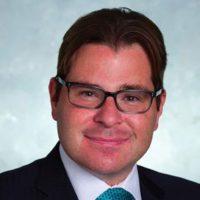Anesthesia Patient Safety Foundation Panel from the American Society of Anesthesiologists (ASA) ANESTHESIOLOGY 2020 Annual Meeting
The APSF: Ten Patient Safety Issues We’ve Learned from the COVID Pandemic
- Read the ASA Media – APSF Panel Q&A
- Click the titles below to watch a specific panel member’s presentation.
▶ Moderator
Start: 00:01
▶ The Critical Importance of Developing National Guidelines
Start: 01:08
▶ Staff Safety and Burnout Risk
Start: 06:07
▶ Safety Implications of Using Anesthesia Machines Outside the Operating Room as Ventilator
Start: 11:38
▶ Introducing Multidisciplinary Providers into the ICU Setting
Start: 16:42
▶ How to Utilize Simulation for Training Health Care Providers to Care for COVID-19 Patients
Start: 22:15
▶ Managing Information Overload
Start: 26:06
▶ Psychological Safety with Patients– adapting to COVID
Start: 30:06
▶ “Circle Up”: A Briefing and Debriefing Model to Rapidly Disseminate Learning and Enact Changes in Practice
Start: 36:01
▶ Rush to Judgement? Publication in the SARS-CoV-2 Era
Start: 41:00
▶ Is our ‘do-more-with-less’ mindset a threat to safety culture?
Start: 46:24
▶ Q&A
Start: 51:18
ASA Media – APSF Panel
1. Mark Warner: What are the top patient safety lessons learned? Does the top 10 change due to various circumstances (such as COVID)?
- APSF annually establishes a “top 10” patient safety issues. These are used to determine website and newsletter content, social media and education efforts, and targeted research.
- In 2020, the COVID pandemic added a new complexity. The viral contagion fit well within one of our priority patient safety issues, HOSPITAL-ACQUIRED INFECTIONS AND ENVIRONMENTAL MICROBIAL CONTAMINATION AND TRANSMISSION (https://dev2.apsf.org/patient-safety-initiatives/; see #6)
- APSF’s directors work in unique facilities and reflect the expanse of clinical practices across the country. Their insights into the COVID pandemic and the key lessons each has learned lead to fascinating and clinically relevant information that is useful to all anesthesiologists and other anesthesia professionals.
- For example,
- Richard Prielipp, APSF director emeritus and Patient Safety Section Editor for Anesthesia & Analgesia, has seen the precipitous increase in COVID-related articles submitted for publication during the pandemic. He is able to provide his insights into the difficulties of sorting accurate, useful articles from those that report studies that may be poorly designed, have findings of dubious quality or veracity, and other issues.
- Jeff Feldman, chair of the APSF’s Committee on Technology, played a major role nationally in helping anesthesiologists, intensivists, and respiratory therapists understand the differences between ICU ventilators and anesthesia ventilators, an important distinction during peak periods of need for ventilators early in the onset of the pandemic in the U.S. and elsewhere.
- Cole, past ASA president and current APSF president, describes how professional societies and regulatory agencies came together quickly after the pandemic’s start in the U.S. to forge new alliances and rapidly disseminate crucial practice guidelines and statements.
- And many more great examples from our APSF directors/anesthesiologists, all of whom actively practice and care for patients during this COVID pandemic.
- The goal of the panel is to have attendees better understand the crucial issues associated with the onset of the COVID pandemic in order for us to be able to learn and develop new processes that can be used in future pandemics and other global health crises.
2. Dan Cole: Why is it important to create national guidelines?
“Not only can I not protect myself, I cannot protect my patients.” That was the cry from anesthesiologists and other anesthesia professionals across the nation who needed guidance during the beginnings of the COVID pandemic. It was imperative that national safety organizations such as APSF and ASA lead the way in developing guidelines for safe patient care.
3. Matt Weinger: What’s at issue with staff risk and burnout? Is that different today because of COVID?
Biggest lesson learned … Don’t neglect the clinician well-being and don’t assume that existing organizational processes/structures will be sufficient or responsive to address anesthesia professionals needs in the face of a major disrupter (e.g., COVID) that generates massive uncertainty, stress, and fear.
4. Jeff Feldman: What are the safety implications of using anesthesia machines outside of operating room as ventilators?
“Anesthesia machines have highly capable ventilators and were successfully deployed as the first line resource to support patients with respiratory failure when the supply of ICU ventilators became insufficient to meet the demand. However, anesthesia machines have unique features that are not familiar to intensive care teams. Lessons learned included how to setup and maintain the machines in the ICU setting and the challenges of monitoring machines used for long term ventilation in settings remote from the operating room.”
5. Steve Greenberg: Why is it important to introduce multidisciplinary providers to the ICU?
One of the silver linings of the COVID-19 pandemics was multidisciplinary unity. Throughout the world, healthcare professionals worked together to provide the appropriate staffing models and the appropriate education for those that were called upon to take care of COVID-19 patients. Several strategies served healthcare systems well to meet the staffing demands during this pandemic.
6. Steve Howard: What’s the importance of simulation training during COVID?
Simulation has advanced anesthesia patient safety over the last 25 years. Earlier this year, simulation was widely used to prepare health care providers for treating patients with COVID19. Anesthesiologists and other anesthesia professionals again lead the way for much of health care.
7. Meghan Lane-Fall: How should we manage information overload during COVID?
To manage the “info-demic,” it is useful to pre-digest information for busy clinicians so that they are able to process and use clinically relevant information. Frequent communication from a trusted source – daily if needed – can also help manage overload by focusing attention and clearing up inconsistencies.
8. Della Lin: What about care teams and the psychosocial issues facing anesthesiologists, other anesthesia professionals, and their entire care teams during in the COVID pandemic?
COVID–the disruption and the isolation that it has rendered–can threaten patient safety. These times require each of us to have a more intentional focus on creating psychological safety with our teams, and an intentional focus on patients as part of those teams.
9. May Pian-Smith: What is “Circle Up” about?
“Circle up!” is a framework for communication and care that was developed at Massachusetts General Hospital for medical simulation. Through the use of repeated briefings, check-ins and debriefings, it helps bolster staff performance, psychological safety and resilience, especially as they relate to our working at the edges of our comfort zones. Whether it was using machines and devices in new ways, or deploying workers to unfamiliar areas with new tasks and unfamiliar team members, we had plenty of learning, flexing and pivoting to do in a short period of time. Moving from shift to shift, this approach allowed dynamic teams to adapt, innovate and be connected in a cyclic iterative way.
10. Rich Prielipp: What concerns should we consider when reading COVID-related scientific articles early during the pandemic?
Dealing with COVID-19 has been a roller coaster ride of information — and MISINFORMATION. Scientific Journal Editors are refining publication algorithms to ensure clinicians receive timely, accurate, and validated information. In the meantime, Reader Beware!
11. Marjorie Stiegler: Is “do more with less” putting patients at risk?
Anesthesiologists and other anesthesia professionals are famous for creativity, problem solving, and resourcefulness – especially in limited resource situations. This is laudable, but shouldn’t be the catalyst that undermines safety culture at the institutional (or national) level.










